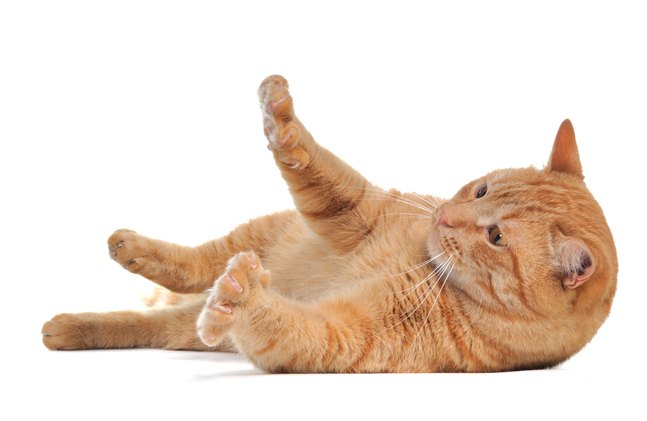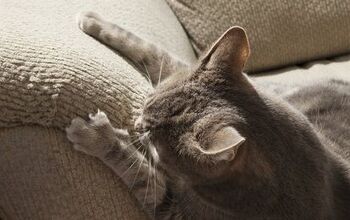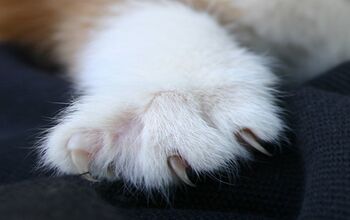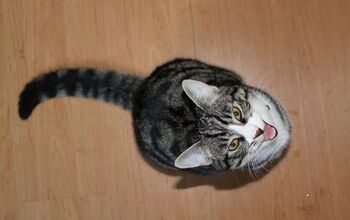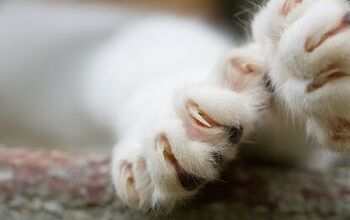Declawing Cats: A Cruel and Unnecessary Procedure

A cat’s claws are vitally important to his physical, emotional, and mental wellbeing, yet many pet owners choose to have their cats declawed so that they no longer have to worry about being scratched or having their furniture scratched up. But is declawing cats a humane procedure, or should you just stick with regularly trimming your cat’s claws, providing plenty of scratching posts throughout the house, or using any of the other products now on the market to keep your cat’s claws from destroying the furniture? Continue reading to learn more.
What is Really Involved in a Cat Declawing Procedure?
A lot of people are under the false impression that a declawing procedure merely removes the claws themselves, and nothing more, from a cat’s feet. But the horrible truth is that declawing involves the amputation of the last bone found on each toe in your cat’s foot. Think of it this way: declawing cats is the equivalent of going into surgery and having each one of your fingertips cut off at the last knuckle.
Related: The Claws Are Out: New York Aims To Ban Cat Declawing
In terms of instruments employed during the declawing process, a veterinarian will typically use either a guillotine clipper or a scalpel to get the job done. The wounds are then stitched together or surgically glued before being bandaged. Your cat is then sent home. If this method isn’t used, laser surgery may be employed, which uses hot light beams that burn and vaporize the skin before amputating the bones in the same way as a scalpel or guillotine clipper would.
What to Expect After Surgery
After this surgery, your cat’s feet will be very sensitive, and you need to take steps to ensure they don’t get infected. This includes removing the standard litter your cat is accustomed to using and replacing it with shredded newspaper for a few days until the wounds completely heal.
Related: 10 Tips On How To Stop Your Cat From Scratching Furniture
A common side effect of making this change is a cat who refuses to use the litter box and ends up eliminating around the house instead. Breaking this newly formed habit can be tough because your cat doesn’t like the newspaper shreds and he also associates the pain in his feet with the litter box.
Long-Term Side Effects of Declawing Cats
Cats who are declawed also tend to become biters even if they never were before. After all, their claws are one of their first lines of defense. Without them, they only have their teeth left as weapons to defend themselves, and many won’t think twice about biting because they can no longer scratch.
More importantly, a cat who has been declawed has to deal with adverse side effects for the rest of his life. When you amputate the toes, the foot no longer rests on the ground the same way as it used to, making walking and sitting difficult and painful. Imagine wearing an uncomfortable pair of shoes for the rest of your life and you may be able to imagine what it feels like to be a declawed feline.
Nerve damage, back pain, bone spurs, and lameness can also result from a declawing procedure, even when it was performed appropriately. Declawing surgeries that aren’t performed correctly may result in improperly removed claws that end up growing back in a way that’s extremely painful to your cat.
What about Tendonectomy?
Tendonectomy is a different type of declawing procedure during which the tendons that control the claws are severed without amputating the toes. The cat retains his claws but has absolutely no control over them. Abnormally thick growth is a common side effect of this procedure, meaning you’ll have to deal with more difficult claw trimming sessions for the rest of your cat’s life. If you fail to keep up with the claw trimming, your cat’s claws can easily get caught on a variety of materials or they can even grow into the paw pads. Other side effects associated with tendonectomy include lameness, infection, and bleeding.
As you can see, declawing is truly a cruel and unnecessary surgery that felines should never be forced to endure. With many humane methods of deterring your cat from scratching your furniture, as well as training methods that will ensure your cat is well-adjusted and won’t scratch you, there’s really no reason to spend the money or put your cat through this procedure.

Lisa Selvaggio is a freelance writer and editor, and our resident cats-pert, with certifications in pet nutrition and pet first aid. She enjoys producing content that helps people understand animals better so they can give their pets a safe and happy home.
More by Lisa Selvaggio



